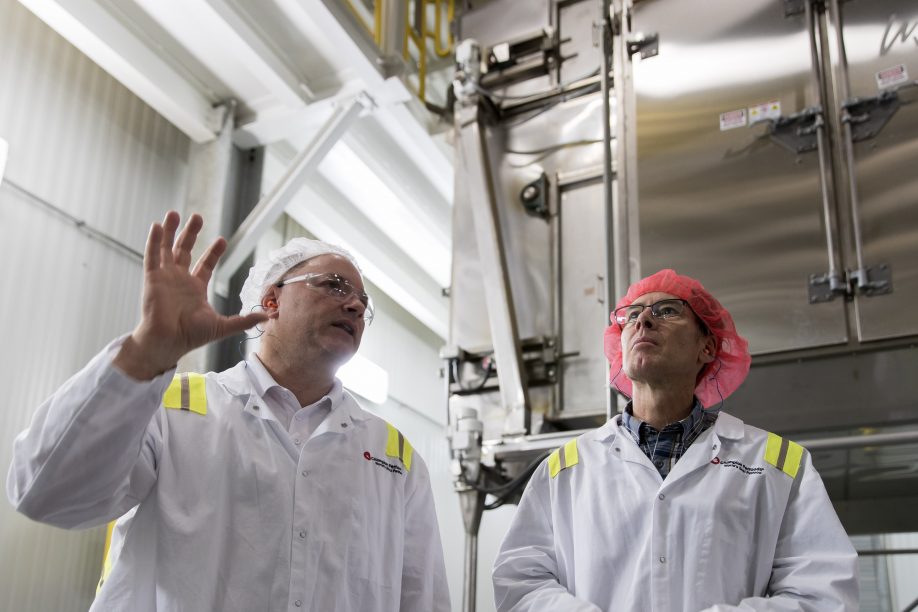Transparency: Why Seeing Is Believing
admin //February 4, 2020//
BY SHAWN MESSONNIER, DVM
As a practicing veterinarian, I get questions all the time about pet diet and nutrition—a topic about which veterinarians surprisingly receive very little formal training. Pet parents are naturally concerned about what constitutes the most nutritious diet and want to be confident they’re providing the very best they can afford. Yet, for consumers, the pet food industry remains shrouded in mystery about what’s really inside the pet food bag and how it’s created.
Impressive to me is the variety and detail of the probing questions that come my way. Out in the marketplace, pet food companies typically make claims and assertions concerning protein ingredients, their origins and proportions inside the little brown kibble nugget. For pet parents, a big leap of faith is required of them because unlike fresh human food, you can’t visually verify the ingredients used, their sources, freshness or the safeness of their handling. Label language can be difficult to discern, too, so people rely mostly on the observations and opinions of friends and family they trust. Inevitably, people hope what goes in the bowl will translate into well-being and happiness for their dog or cat.
It’s also safe to say that we all are becoming digital creatures, able to access information on most anything 24/7 from the palm of our hands. Also, virtually any type of misdeed, misstep or “mis-truth” is reported, helping foster an environment where people are slower to trust statements coming from food companies. Pet parents in particular have grown more and more concerned about transparency in pet food-making—and want to understand the details of how pet foods are created.
Throughout 2019, I participated in a pet industry first: the Champion Transparency Council, established by this Edmonton, Alberta-based company in an effort to credibly verify and validate for everyone what they claim to be true and authentic about their pet food.
The Council consists of myself and another veterinary physician, plus two pet lovers who passed successfully through a public application process requiring them to weigh in on their views about the importance of transparency to pet parents. The four of us have visited Champion Petfoods’ DogStar Kitchen in Auburn, Kentucky, twice.
We’ve witnessed every aspect of how they make food, from the intake of ingredients (and their suppliers) on one end to the packaging of food on the other. We’ve observed the kitchen, the cooking process, the safety steps, the fresh and raw proteins used—everything in the product creation journey.
It was a testament to Champion’s openness—their transparency—that we as outside, third parties had such complete access. We met with their kitchen managers, the executives in charge of sourcing ingredients, their innovation chief, their nutrition experts, food safety scientists, even their in-house veterinary physician so we could learn and ask the questions most people would want to know the answers to like, “What do you know about animal physiology that impacts what’s in the food?”
A highlight of this yearlong deep dive into Champion Petfoods were the field trip experiences. We met their ingredient suppliers—farmers, ranchers and fishers. We toured the fields and witnessed the impressive energy, knowledge, commitment and pride they take in their work. At Roundstone Native Seed & Botanicals, we met with owner John Seymour, who gave us an intimate look at the intricate and dynamic world of botanical farming that provides the unique seed stock used to enhance pet food digestibility. Then on to the Allen family’s Bluegrass Bison Farm, where we observed these magnificent animals and the great care taken maintain their health and wellbeing with as little interference from people as possible.
It is no surprise that what puts quality in pet food is the quality of ingredients used. When Champion talks about biologically appropriate food, intentionally designed to respect the eating anatomy and physiology of dogs and cats, it comes to life quite literally when your own hands are on the catfish in the boat, selecting “the keepers” that will end up in the bag of pet food.
We saw the relationship between farm to ingredient to food-making writ large. In that experience we’re able to report on the truth of what Champion conveys about the use of fresh and raw proteins. We Council members hope the example Champion provides will be adopted through the rest of the industry. It’s the kind of information pet parents and vets want and need right now—to help everyone make the best choices for pet health and well-being. This form of transparency is what’s helping us all better understand what we’re feeding, what we’re purchasing and whom we can trust.
All of this matters greatly, because pet food is key to the health and well-being of pets—and pet parents express their love and care for their furry family members through the pet food choices they make.



















